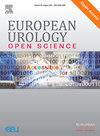Optimizing Screening Performance for the Risk of Hyperoxaluria and Urolithiasis Using the Urinary Oxalate/Creatinine Ratio: A Retrospective Analysis
IF 3.2
3区 医学
Q1 UROLOGY & NEPHROLOGY
引用次数: 0
Abstract
Background and objective
The risk of chronic kidney disease (CKD) and nephrolithiasis increases with higher levels of oxalate excretion in 24-h urine, warranting monitoring in specific populations, especially after malabsorptive bariatric surgery. However, implementation of systematic 24-h urine collection is challenging, so there is a need for alternative screening methods.
Methods
Using retrospective data from patients evaluated for the risk of urolithiasis, we assessed different thresholds for the urinary oxalate/creatinine (UOx/Creat) ratio to optimize the screening performance for hyperoxaluria diagnosis and urolithiasis risk using lithogenic risk surrogates.
Key findings and limitations
Among 1264 patients referred for urolithiasis, 38% were excluded because urine collection was considered incomplete. The remaining 786 individuals were included in our analysis, of whom 16% exhibited hyperoxaluria. A UOx/Creat screening threshold between 35 and 45 μmol/mmol demonstrated good performance, depending on the clinical weighting for false-negative versus true-positive results and the cost/benefit ratio.
Conclusions and clinical implications
The UOx/Creat ratio is a promising tool in screening for hyperoxaluria-related complications. However, future research is needed to validate its performance and address the limitations identified to confirm its clinical relevance and effectiveness.
Patient summary
Our study shows that a simple test to measure the ratio of oxalate to creatinine in urine can help in identifying people at risk of kidney stones, especially for patients who have had weight-loss surgery. The test showed good screening performance, but more research is needed to confirm our findings.
利用尿草酸/肌酐比值优化高草酸尿和尿石症风险筛查性能:回顾性分析
背景和目的慢性肾脏疾病(CKD)和肾结石的风险随着24小时尿液中草酸盐排泄量的增加而增加,需要对特定人群进行监测,特别是在吸收不良的减肥手术后。然而,实施系统的24小时尿液收集是具有挑战性的,因此需要其他筛查方法。方法利用尿石症风险评估患者的回顾性数据,我们评估了尿草酸/肌酐(UOx/Creat)比值的不同阈值,以优化高草酸尿症诊断和尿石症风险的筛查性能。在1264例因尿石症转诊的患者中,38%因尿液收集不完整而被排除在外。其余786人纳入我们的分析,其中16%表现出高草酸尿。UOx/Creat筛选阈值在35和45 μmol/mmol之间表现出良好的性能,这取决于假阴性与真阳性结果的临床权重和成本/效益比。结论和临床意义UOx/Creat比值是一种很有前途的筛查高草酸相关并发症的工具。然而,未来的研究需要验证其性能,并解决已确定的局限性,以确认其临床相关性和有效性。您的研究表明,测量尿液中草酸盐与肌酐比值的简单测试可以帮助识别有肾结石风险的人,特别是那些做过减肥手术的患者。该测试显示出良好的筛选效果,但需要更多的研究来证实我们的发现。
本文章由计算机程序翻译,如有差异,请以英文原文为准。
求助全文
约1分钟内获得全文
求助全文
来源期刊

European Urology Open Science
UROLOGY & NEPHROLOGY-
CiteScore
3.40
自引率
4.00%
发文量
1183
审稿时长
49 days
 求助内容:
求助内容: 应助结果提醒方式:
应助结果提醒方式:


